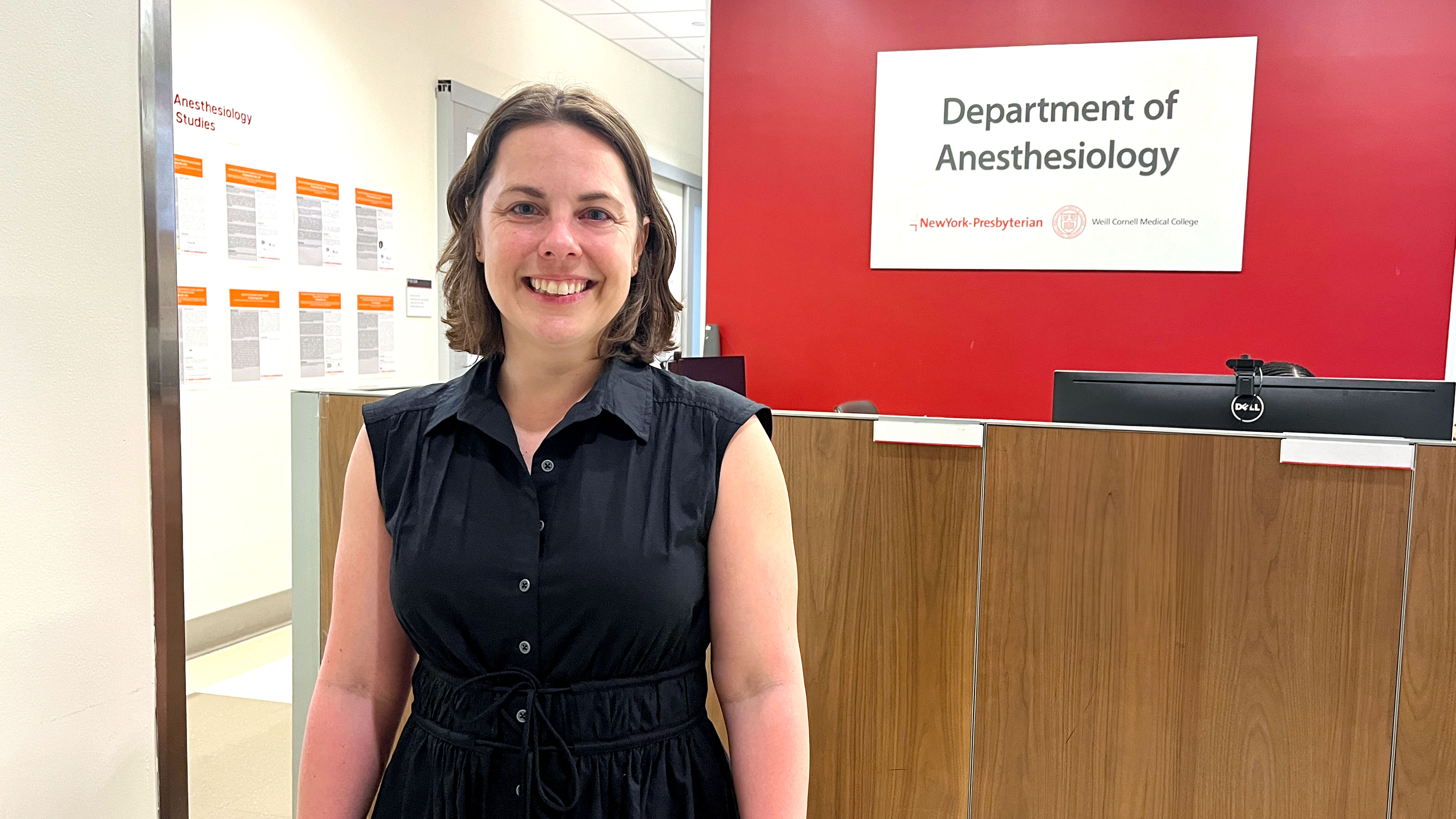
Dr. Deirdre Kelleher has been an environmentalist since the third grade. She grew up in a home that was committed to recycling and avoiding waste.
So when she learned that the anesthetic gases she was using at work — notably, desflurane — were harmful to the environment, Dr. Kelleher, an assistant professor of clinical anesthesiology and chair of the department’s sustainability committee, took note.
“I personally felt like I needed to do something,” she said.
Eliminating Greenhouse Gases
Modern anesthetic gases have roughly the same safety profile, but they are potent greenhouse gases and contribute to climate change. Yet some are much worse for the environment than others. Desflurane, for example, has a global warming potential (GWP) — a measure used to compare the impact of different gases on the environment — about 3,700 times greater than that of carbon dioxide (CO₂).
With the support of Dr. Hugh Hemmings, the senior associate dean for research and chair of the Department of Anesthesiology, Dr. Kelleher increased awareness of the problem and promoted alternatives, such as switching to intravenous anesthesia or using the less impactful gas sevoflurane — its GWP is about 350 times that of CO₂. Dr. Kelleher notes that sevoflurane is not only better for the environment, but less of it is required to be effective, and it is less expensive.
“As far as we know, there is no clinical benefit to using desflurane,” she said. “Studies just don’t bear it out.”
Thanks to her efforts, anesthesiologists at Weill Cornell Medicine have joined a worldwide push to fully remove desflurane from all anesthetizing locations, making NewYork-Presbyterian/Weill Cornell Medical Center an entirely desflurane-free campus since December. Several other NewYork-Presbyterian campuses are also desflurane-free, and Dr. Kelleher is encouraging these efforts enterprise-wide.
Decommissioning Nitrous Oxide Pipes
Another measure Dr. Kelleher is championing: decommissioning nitrous oxide pipes in the operating rooms (ORs).
Nitrous oxide, a greenhouse gas that is known to also deplete the ozone layer, is typically piped into the OR from a central manifold. But research shows it’s an inefficient system.
“Roughly 97% of the nitrous oxide that we purchase leaks into the air and never reaches a patient,” says Dr. Kelleher.
She explains that changing the delivery method to one where nitrous oxide comes directly from cylinders mounted on the anesthesia machines reduces waste and is better for the environment. NewYork-Presbyterian/Weill Cornell Medical Center is now in the process of improving the system with the goal of turning off the nitrous oxide pipes once the new delivery method is in place.
Dr. Kelleher is pleased with the progress. She hopes that raising awareness will lead everyone from manufacturers to clinicians to be more thoughtful about their environmental choices.
“People don’t want to harm the environment,” she said. “If you tell them about it, they try to make a change. I’m trying to make it as easy as possible to do the right thing.”

